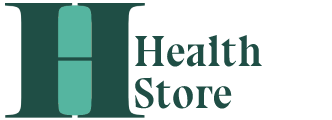Varicose veins are a common vascular condition that affects the lives of millions of people worldwide. They typically develop in the veins of the lower extremities and can cause numerous discomforts and complications. So, why do varicose veins develop? And what are some ways to alleviate them?
1. What are varicose veins? Why do people get varicose veins?
Varicose veins are a condition in which blood flow is blocked in the veins of the lower extremities, causing blood to accumulate in the veins, leading to their swelling and twisting. They typically occur in larger deep or superficial veins, most commonly the great saphenous vein and the small saphenous vein.
The main cause of varicose veins is dysfunction or damage to the vein wall. This can be due to a combination of factors, including genetics, prolonged standing or sitting, lack of exercise, obesity, pregnancy, overexertion, and deep vein thrombosis.
What are the symptoms of varicose veins?
Varicose veins can present with a variety of symptoms, including:
- Leg pain or discomfort: especially after standing or walking for a long time.
- Swelling and heaviness: Swelling and heaviness in the legs can be common signs of varicose veins.
- Visible surface veins: Twisted veins are visible on the surface of the skin, forming a sign of varicose veins.
- Skin changes: Long-term varicose veins may cause the skin to become fragile, dry, damaged, or develop ulcers.
3. Is there any way to improve/relieve varicose veins?
Treatment for varicose veins depends on the severity of the condition. Here are some common treatment options:
- Compression stockings: Compression stockings are specially designed tights that help improve blood circulation, relieve pressure on the veins in your lower legs, and reduce the appearance of symptoms. 1
- Medication: Certain medications can be used to relieve symptoms of varicose veins, such as pain and inflammation. Commonly used medications include nonsteroidal anti-inflammatory drugs ( NSAIDs ) and anticoagulants.
- Medical surgery: For severe varicose veins, medical surgery may be necessary. Surgical procedures include ligation and stripping, which cut or block the affected blood vessels to restore normal blood flow .
- Radiofrequency ablation: This is a non-invasive treatment that uses radiofrequency energy to seal damaged veins, allowing blood to flow back to normal veins4 .
4. What is the relationship between varicose veins and rutin?
Rutin is a natural plant compound belonging to the flavonoid class of compounds found in certain plants, such as flowers, fruits, and vegetables. It is believed to have various biological and pharmacological effects, one of which is related to varicose veins.
- Strengthens blood vessel walls: Rutin can increase the strength and elasticity of blood vessel walls, reducing the risk of varicose veins. It helps reduce the fragility of vein walls, preventing vasodilation and the further development of varicose veins.
- Anti-inflammatory effects: Rutin has anti-inflammatory properties that can reduce the inflammatory response caused by varicose veins. Varicose veins are often accompanied by tissue inflammation and damage to the lining of the blood vessels, and rutin 's anti-inflammatory effects can alleviate related symptoms.
- Improved circulation: Rutin is believed to help improve blood circulation, reducing the risk of congestion and blood clots. Better circulation can reduce swelling and discomfort in the lower extremities, which can alleviate the symptoms of varicose veins.
Notes:
- National Institute for Health and Care Excellence. (2013). Varicose veins in the legs: The diagnosis and management of varicose veins. Retrieved from https://www.nice.org.uk/guidance/cg168 ↩
- Mayo Clinic. (2020). Varicose veins: Diagnosis & treatment. Retrieved from https://www.mayoclinic.org/diseases-conditions/varicose-veins/diagnosis-treatment/drc-20350649 ↩
- American Society of Hematology. (2020). How are varicose veins treated? Retrieved from https://www.hematology.org/education/patients/blood-clots/3549.aspx ↩
- MedlinePlus. (2022). Radiofrequency ablation. Retrieved from https://medlineplus.gov/ency/article/007395.htm ↩



